Creating a sustainable healthcare workforce demands innovative solutions
Healthcare staffing shortages are rising across every category of worker, and they are the healthcare industry’s top patient safety concern. It’s a situation that requires health systems to find new, innovative ways to recruit and retain talent and redesign work within their organizations.
Nearly 20% of healthcare workers quit their jobs during the COVID-19 pandemic, and up to 47% plan to leave their positions by the end of 2025. But even before the pandemic, there were signs that burnout was taking a toll on the industry, with two out of five nurses and nearly one-third of physicians reporting physical, mental and emotional exhaustion due to the stress of their jobs. Now, with labor costs ballooning and resources stretched to capacity, healthcare organizations are looking to their peers and other industries to determine next steps.
How are forward-thinking healthcare organizations approaching staffing challenges facing the industry? In this HFMA roundtable, sponsored by Jumpstart Capital, five healthcare leaders share insight.
How would you describe the staffing challenges in your organization?
Matthew Cox: The disadvantage we have is that we compete against other organizations for the same labor. When you think about many of our positions in the revenue cycle space, we’re competing with for-profit businesses that are able to pay higher wages. Meanwhile, the likelihood of wages decreasing in the future is zero. These factors put a lot of pressure on our bottom line: We’re going to have less people, and we’re going to have to pay them more. These are just some of the reasons why I think technology and automation are going to be such a big part of our future.
Kim Hodgkinson: I agree with Matt. At the same time, we need to change our patients’ mindset to accept automation and advanced technology. That is another barrier that we have: getting them to accept that they are not going to walk into a hospital and talk to a financial counselor anymore. Instead, they’ll have to call us by phone or tell us electronically. For some patients, that’s not an easy transition to make.
What are the initiatives you either have in place or plan to implement to tackle staffing challenges?
Cox: One of the long-term initiatives we’re very proud of is our partnership with two state universities — Grand Valley State University and Oakland University in Michigan. We have invested dollars to help them significantly increase the size of their nursing programs. For example, at Grand Valley State University, every year, they have 600 qualified applicants who are ready for their junior year, but only 200 slots available for their nursing program. That means there are young people who want to become nurses but can’t enroll in the program due to space. These initiatives are enabling the universities to increase their class size by over 100. The great news is we’ll start to get additional nurses from Grand Valley within two years. We have a similar partnership with Oakland University, where they had many more applicants than they had slots. They’ve also been able to roll out programs where if you have a bachelor’s degree in any area, you can become a nurse in less than two years. We’ve structured these programs in such a way that the additional nurses that graduate from these universities will commit to work for our organization for at least two years.
Jennifer Gardyne: I love that idea. I’ve been thinking a lot about filling the pipeline. I actually come from a totally different industry — utilities, working for Pacific Gas and Electric Company [PG&E]. There was a massive shortage of people who [could] work on gas pipelines. PG&E invested a lot in scholarship programs. They partnered with colleges to develop programs, and it created a really nice pipeline of candidate pools for people to come in to get that work done. So that’s an awesome strategy. At PG&E, our commitment was $40 million over five years to two universities — a significant investment.
Fahd Benjalil: At the hospital level, to Jen’s point, what we’ve done is work with a local specialized high school to train students as hospital volunteers. We also provide scholarships for nursing school, even within our own staff. We have aides and other professionals who want to become nurses, but they can’t really afford to prepay the school, which keeps them from participating in our college education reimbursement program. Scholarships will definitely help overcome this obstacle. But I think the biggest piece — and what we’ve seen at Sharp — is that most turnover for nurses happens between two and five years of employment. We are working on solving this.
Hodgkinson: There is also the [other] staff — housekeepers, food and nutrition services, patient access — and the question of, “How do we help them grow?” We’re looking at creative ways to grow our own and give our people opportunities so they can have a more valuable work experience, and we’re looking at different compensation models for this.
Gardyne: The benefit structure is an interesting piece. People’s expectations for benefits are changing, and there are a lot of high-cost benefits health systems offer that employees may not find valuable. But transitioning to a benefit model that is more flexible is tough, in part because you have an embedded workforce that is used to your traditional benefit model.
What are some of the longer-term solutions you’re thinking about?
Hodgkinson: The challenge is getting patients used to not having that personal touch that they’ve become used to. For example, rural hospitals can’t afford to have a financial counsellor sitting at every location, waiting for patients to walk in. We’re trying to knock down little capacity barriers. We have to get patients and their families to understand that just like in banking or other industries, we have to become more efficient so we can have the resources to take care of them. Automation is going to get us there. Centralization is going to get us there. But you have to standardize first, or it’s pretty messy.
Cox: It’s not just patient acceptance. It’s making self-service the easy thing for patients to do. Once we make the right things easy and the wrong things hard, I think patients will adopt it much easier.
Gardyne: I one hundred percent agree. Generational differences will influence patient behavior, but I do think consumers will start to demand that services be accessible and easy to use and automated.
Benjalil: I have aging veterans who are in their 70s and have a hard time with technology, but when we adapt tools to their needs or educate them on how to use self-service, they will use these features. It’s a matter of making it simpler for the elderly or educating them.
Cox: There’s high tech, and then there’s high touch. Some of our patients will embrace technology, and they may not need the high touch. Others may benefit from a team member who greets them when they walk in and say, “Were you able to preregister on your phone or at home? If not, we have a kiosk right here. Do you need some help?” I’m optimistic that 80% of our population is ready for high tech, and the other 20% will require high touch.
What would it be like if regional health systems that do not compete with each other could collaborate to come up with solutions for workforce challenges? What would be the pros and cons?
Hodgkinson: I think some of us already do that. We have peer networks where we can talk about these issues. Have we developed solutions that we use together? Probably not. We’re just saying, “What are you doing to tackle this challenge?” because nothing’s really a secret when it comes to workforce management.
Cox: A rising tide raises all boats, right? Even if two systems are competitive health systems, there are things we can do to help each other get through the workforce shortage crisis, such as partnering with each other around a program that gets presented to high schools or colleges. Because this crisis is so deep, we’re willing to consider things that maybe we wouldn’t have three years ago.
There are two ideas we’d like to get your reaction to. One is pulling a group of health systems together — maybe five or 10 systems — to source these solutions, identify outcomes and bring them back to their organizations. Another idea would be to invest in a dedicated venture capital [VC] firm that has the discipline and the rigor to find solutions that meet health systems’ requirements. What is your reaction to these ideas as a way of generating long-term solutions for health systems?
Benjalil: No offense; I love VC. But I think what needs to happen is global change within our industry for us to retain the best and brightest talent. Yes, we have to have automation, but we also have to remember why physicians and nurses decided to work in healthcare: to help people. It needs to be a combination of health systems and VC working together as opposed to VC coming up with a solution, where health systems look at what they want and then partner with VC to come up with solutions.
Cox: I believe it’s also a matter of pulling the right people together, across disciplines — in your own organization or in collaboration with another health system — to ensure you’re focusing on the right areas. CFOs have a unique ability to pull people together and rally the troops. Some people might be surprised that the idea of partnering with nursing schools to strengthen our nursing pipeline came from a CFO. If there are innovative ideas that can help make our teams happier, and if these ideas also save money, those are ideas that should be explored. When I think about VCs and the workforce shortage, if the conversation were to center on, “Let’s create a new staffing company and have the health systems own it,” I would say I am not interested in that. But if it’s a company that could help introduce us to offshoring opportunities or building a pipeline or helping us think about benefits in a new way, I’m all for it.
Vic Gatto: The concept is for the VC to listen to you and nine other health systems and do what you tell us to do. You would come up with six or so ideas that you think could be really interesting to explore — such as around providing discounts to employees as a benefit of employment — and we would come back to you and say, “What about these three ideas? What if we were to approach them in this way?” It’s kind of flipping the process, where it’s not about a VC selling you what they’ve decided they want to invest in; instead, it’s the VC listening to what 10 health systems need help with and coming up with a solution.
Hodgkinson: When we talk about VCs, they tend to cherry-pick what they want to do, and they’re going to pick the things where they make money. Many of our organizations are not-for-profits, and right now, most of us are not making money. We need to figure out how to get our cash flow built up so we can continue to grow and reinvest in our communities. We need these VCs to actually take the risk with us, knowing that they’re not going to make money on everything they do with us, but there are some foundational models that could be beneficial.
Gatto: I think it’s about elevating the calling of nursing and care delivery and helping people at a really vulnerable time in their lives. That’s what I think VC should bring back to the job. There are probably lots of initiatives that won’t make money, but they have to be sustainable. I think that’s the whole point of flipping the VC model and having the health systems be in charge.
Gardyne: If I hear what you’re saying, is it about going in and kind of getting our own Amazon think tank — you know, the people who can listen to our problems and find solutions for us?
Mary Mirabelli: What I think I’ve heard during this conversation is, collaboration and sharing of ideas to meet health systems’ needs is valuable. If VC can answer the question, “How do we collaborate to find the right solution?” — such as by creating a venture fund focused solely on meeting the needs of health systems in partnership with one another — without making a multiple of 10, that would be valuable to you all.
Gatto: What I’d add to that, Mary, is that you can’t have any OpEx. There’s no OpEx to spare. So, a VC firm can’t charge a quarterly fee to health systems, or this type of model isn’t going to work.
Gardyne: Right. We don’t always know what the solution is, so we may not say what we need. We might say, “Here’s the problem. How would you address it?”
Gatto: As regional health systems tackle challenges such as workforce staffing shortages, it’s clear there are opportunities for these systems to work together in addressing these challenges. There’s no silver bullet; many of these solutions will involve technology and automation, as we’ve discussed today. Looking at multiple approaches for addressing these challenges in the short term and long term — including in partnership with one another and with the help of a venture fund — will be key.
Panelists
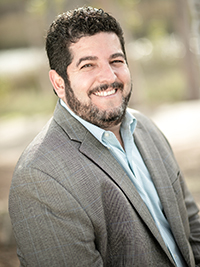
FAHD BENJALIL
CFO and COO at Sharp Coronado Hospital in Coronado, California
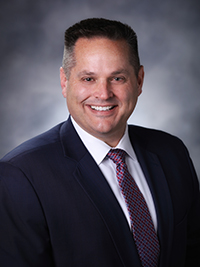
MATTHEW COX, MBA, CPA
CFO at Corewell Health in Grand Rapids, Michigan
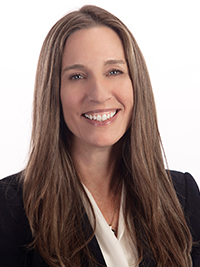
JENNIFER GARDYNE
Vice president, finance at Sharp Healthcare in San Diego, California
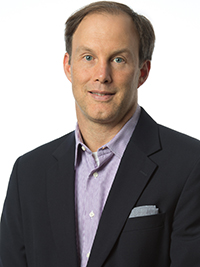
VIC GATTO
Managing general partner at Jumpstart Capital in Nashville, Tennessee
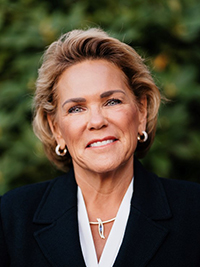
KIM HODGKINSON
Senior vice president and CFO at Hospital Sisters Health System in Springfield, Illinois
MODERATOR
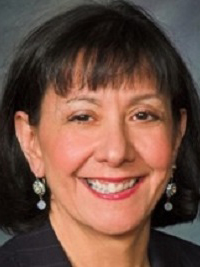
MARY MIRABELLI
Senior vice president corporate strategy at HFMA in Downers Grove, Illinois
About Jumpstart Capital
Jumpstart Capital is a venture capital firm that partners with regional health systems as strategic investors to leverage early stage tech-enabled services and technology companies to grow revenue, increase margins and improve outcomes. Jumpstart Capital is currently raising a new fund with 8-10 regional health systems and is led by Managing General Partner Vic Gatto. Vic has been an investor in healthcare and technology since 2001 and has made over 250 investments in early-stage innovation companies in the areas of healthcare services, medical devices, diagnostic tools, technology, and data analytics.
This published piece is provided solely for informational purposes. HFMA does not endorse the published material or warrant or guarantee its accuracy. The statements and opinions by participants are those of the participants and not those of HFMA. References to commercial manufacturers, vendors, products, or services that may appear do not constitute endorsements by HFMA.






